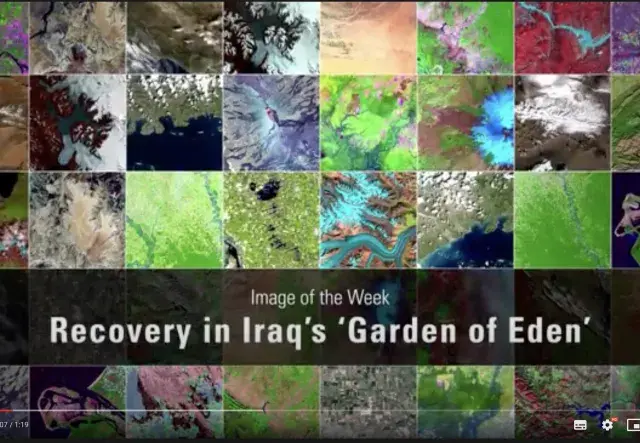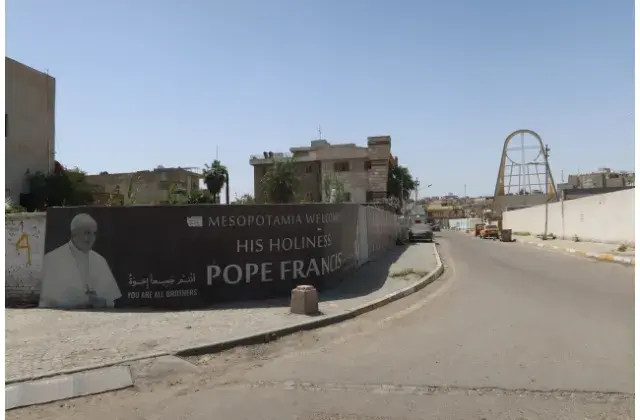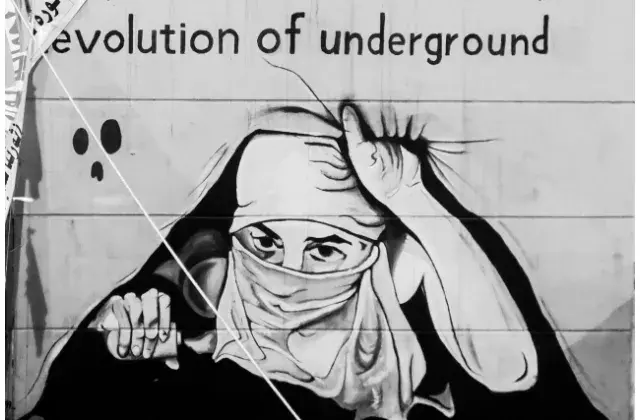أهوار جنوب العراق تصبح ضمن قائمة التراث العالمي لليونسكو (٢٠١٦ - ٢٠٢٣)

في عام 2016، تم إدراج موقع أهوار جنوب العراق كموقع للتراث العالمي بموجب المعايير الثقافية الثالثة والخامسة والمعايير الطبيعية التاسعة والعاشرة تحت عنوان: "أهوار جنوب العراق: ملجأ للتنوع البيولوجي والمناظر الطبيعية الأثرية للمدن الرافدينية". بموجب المعايير الثقافية، تضمنت أنقاض أوروك وأور وإريدو. تتألف الممتلكات الطبيعية من أهوار الحمار الغربي (38٪) والأهوار الوسطى (29٪) وأهوار الحويزة (23٪) وأهوار الحمار الشرقية (9٪). تمتد المكونات السبعة الإجمالية على أربع محافظات في العراق.
في عام 2016، تم إدراج موقع أهوار جنوب العراق كموقع للتراث العالمي بموجب المعايير الثقافية والمعايير الطبيعية و تحت عنوان: "أهوار جنوب العراق: ملجأ للتنوع البيولوجي والمناظر الطبيعية الأثرية للمدن الرافدينية". بموجب المعايير الثقافية، تضمنت أطلال الوركاء وأور وإريدو. تتألف الممتلكات الطبيعية من أهوار الحمار الغربي (38٪) والأهوار الوسطى (29٪) وأهوار الحويزة (23٪) وأهوار الحمار الشرقية (9٪). تمتد المكونات السبعة الإجمالية على أربع محافظات في العراق.
تقع أهوار بلاد ما بين النهرين، والتي سميت بهذا الاسم نسبة إلى المنطقة التاريخية التي حددها نهري دجلة والفرات، على سهل فيضي مسطح شاسع في جنوب العراق حيث تلتقي المجاري السفلية للنهرين لتكوين دلتا داخلية واسعة. وتنبع المياه التي تحافظ على حياة الأهوار بشكل رئيسي من مستجمعات المياه للنهرين في مرتفعات الأناضول في تركيا وروافد من مرتفعات زاغروس في إيران والتي تنضم إلى نهر دجلة. ويوفر تدفق النهر نبضة فيضانية في اتجاه مجرى النهر. وفي جنوب العراق، تتسطح الأرض، وتتباطأ الأنهار وتسقط الرواسب، وتتعرج، وتنقسم إلى فروع قبل أن تتدفق (نهر الفرات فقط) إلى الخليج العربي - تاريخيًا على الأقل.
من خمسينيات القرن العشرين حتى سبعينياته، كان الامتداد المقدر لأهوار بلاد ما بين النهرين، والمعروفة أيضًا باسم أهوار جنوب العراق، 15000-20000 كيلومتر مربع. دعمت الأراضي الرطبة في الأهوار أنماط الحياة التقليدية لنحو نصف مليون شخص، حتى الخمسينيات من القرن العشرين. طور الأهواريون، وهو الاسم الصحيح للمجتمعات الأصلية في المنطقة، ثقافة فريدة من نوعها تركز على الموارد الطبيعية للأهوار وسبل العيش القائمة على صيد الأسماك وحصاد القصب وزراعة المحاصيل وتربية الجاموس. لعدة قرون، عاشوا في عالم منعزل إلى حد ما، بعيدًا عن التأثير الخارجي.
منذ الستينيات والأعوام التي تلت ذلك، أدى استكشاف النفط وبناء السدود في المنبع والتجفيف للزراعة والحرب والصراعات الدولية، فضلاً عن الجفاف والتصحر الناجم عن تغير المناخ، إلى إتلاف هذا النظام البيئي القيم. وبسبب تجفيف الأهوار في الثمانينيات والتسعينيات من قبل الدكتاتور السابق صدام حسين، انخفضت الأراضي الرطبة بشكل كبير وانخفضت مساحتها بنحو 90٪ بحلول عام 2000. ونتيجة لذلك، لم يتبق سوى حوالي 20 ألفًا من نصف المليون الأهواريين السابقين. في عام 2003، عندما هزم الغزو الذي قادته الولايات المتحدة صدام حسين؛ تم هدم السدود والحواجز والسدود التي حُفِرَت لتجفيف الأهوار، وكان العديد منها بمبادرات محلية. وعادت المياه والأهوار إلى طبيعتها.
الآن، بعد عقدين من الزمان، أصبحت 70% على الأقل من الأهوار خالية من المياه (تشير بعض المصادر إلى 85%). وقد أدت مشاريع السدود في تركيا وسوريا وإيران إلى تقليص حجم نهري دجلة والفرات. ويؤدي انخفاض تدفق النهر إلى تسرب المياه المالحة من الخليج. ولا تزال التربة والمياه ملوحة بشكل كبير، نتيجة لسنوات عديدة من الجفاف. كما تتزايد معدلات التلوث جنبًا إلى جنب مع الملوحة. ويتم إلقاء المجاري والمبيدات الحشرية والنفايات من المصانع والمستشفيات مباشرة في الأنهار على طول مجاريها وينتهي بها المطاف في الأهوار. كما تم استغلال هواري الحويزة والحمر بسبب احتياطيات النفط الغنية بها. إن الجفاف يدمر الأهوار للعام الخامس على التوالي، وهو الأسوأ منذ 40 عامًا وفقًا للأمم المتحدة. كما أصبحت الأمطار نادرة بشكل متزايد. ويتوقع البنك الدولي أنه في السنوات الخمس والعشرين القادمة سترتفع درجات الحرارة بمعدل 2.5 درجة. في السنوات الماضية، أُجبر العديد من الأهواريين على مغادرة أراضيهم إلى مدن أو مناطق أخرى داخل العراق. وتسمي منظمة الأغذية والزراعة التابعة للأمم المتحدة (الفاو) هذا "النزوح". وعلاوة على ذلك، عند وصولهم إلى الوجهة الجديدة، غالبًا ما يُعامل الأهواريون على أنهم منبوذون. ومن المرجح ألا تكون الأهوار كما كانت من قبل. ومن غير الواضح إلى متى ستظل المناطق التي غمرتها المياه مرة أخرى على هذا النحو، بالنظر إلى تغير المناخ ومشاريع السدود في المنبع ودور البشرية في الحفاظ على الطبيعة ومواردها أو استغلالها.
لقد وفر وضع العراق على قائمة التراث العالمي لليونسكو ومشاركة العراق في اتفاقية رامسار بشأن الأراضي الرطبة الدولية منصة للمناقشة الدولية. ولكن لا يزال الإطار السياسي المحلي مفقودًا. إن منتزه الأهوار الرافدين الوطني موجود على الورق فقط. مشروع حديقة مياه الصرف الصحي في عدن في العراق، وهو مشروع تجريبي بين شركة إيكوتكنيكس البريطانية / الأمريكية ومنظمة طبيعة العراق، معلق منذ عام 2021 بسبب عدم كفاية التمويل والافتقار إلى الإرادة السياسية من جانب وزارة الموارد المائية. إن العمل الذي يقوم به مركز إنعاش الأهوار العراقية (CRIME)، الذي تأسس كقسم من وزارة المياه في عام 2003، إلى جانب مشاركة العراق في العديد من الاتفاقيات الدولية، يساعد في ضمان الحفاظ على مناطق محددة محدودة من الأهوار وعلى المدى القصير فقط. بغض النظر عن كل الجهود، لا يمكن للأهوار جنوب العراق وسكانها البقاء على قيد الحياة إلا إذا كان هناك ما يكفي من المياه.
هذا المحتوى مرخص بموجب رخصة المشاع الإبداعي CC BY-NC 4.0.






